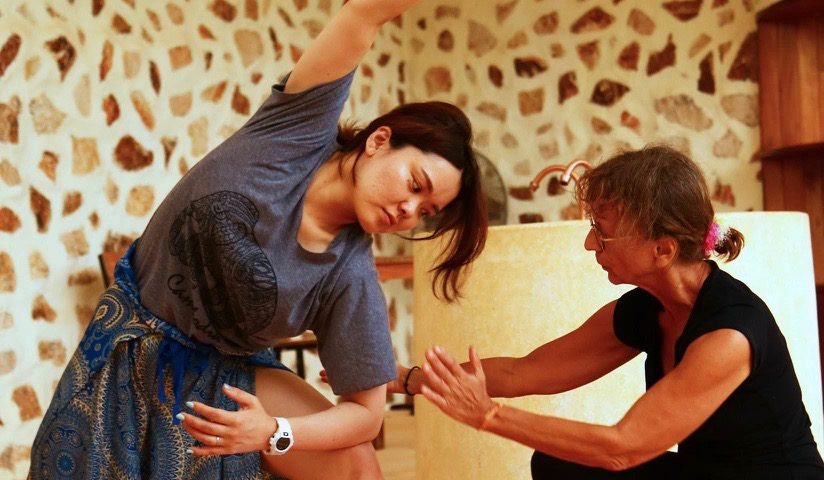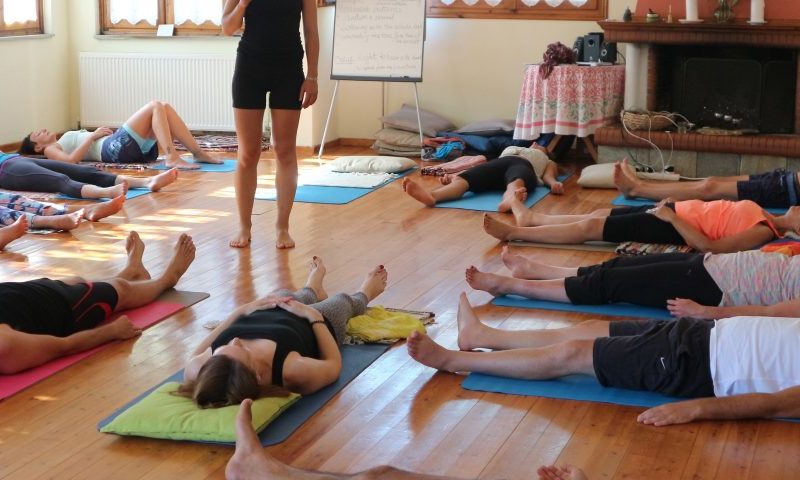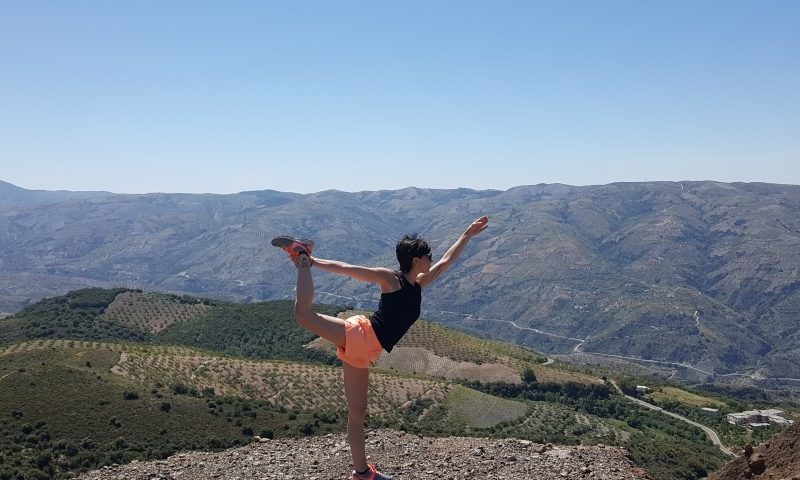Your posture and your yoga breath
Posture affects our breath – and how people see us!
Posture has a double significance in our lives: it affects how we breathe, and so our health, and it affects how others see us. First impressions can be important as they may well determine whether we get that job we’re after, or whether we convince a customer to buy. Look around you and observe how you react to people you see at the store, in a dentist’s waiting room, in a long line at the airport . . . As for myself, I see a guy slouching, rounded shoulders, abs collapsed, chin to chest, and next to him, another guy standing tall, shoulders back, gaze straight ahead, and – take a deep yoga breath! – I know who I would go for. Appearances can be deceptive, of course, but self-confidence inspires confidence, while bad posture, rounded shoulders and sunken chest imply a desire to escape attention, as if saying, “let me be; I want nothing to do with you.”
The body has to support the weight of the head
Let’s go deeper though; the important thing here is health. Imagine that guy with the rounded shoulders and collapsed abs: his back body forms a convex curve, the front body, a concave curve that inhibits his breathing. Did you know that the head weighs around five kilos? The neck supports this weight, which is delicately balanced on the cervical vertebrae. When we slouch, this weight is increased because the head hangs forward, increasing pressure on the neck and spine. Recent studies have calculated that as the head drops – when texting, for example – the weight increases, and exerts more and more pressure on the vertebrae, sliding them out of alignment into an unnatural curve. (Check out “Assessment of Stresses About The Cervical Spine: Caused by Posture and Position of the Head” for more detailed information on this.) As this curve increases, pressure is exerted on the cushioning pads between the vertebrae, which may bulge out and pinch a nerve so causing pain in the shoulders and/or down the arm and into the hand and fingers. The functioning of the whole body is affected by such bad posture.
What happens when we slouch?
Imagine what is happening inside the body when we slouch over a laptop or tablet screen. The lungs and heart collapse and press down on the abdomen. All the digestive and sexual organs are in the abdominal cavity – and they were not designed to support the weight of the head, heart and lungs! We were, in fact, designed to walk on hands and legs (think cat/cow!) with all those vital organs floating freely, protected by the spine. We have adapted to our bipedal posture and movement, and we need to maintain our relatively new spinal curves if we want everything to function correctly. You’ve probably seen t-shirts with the macho male striding along, having developed from the ape on all fours and gradually rising, wielding weapons and holding himself upright. Well, nowadays, we frequently resemble one of those earlier, prehistoric figures. (For an example, see The Evolution of Posture)
When we round our shoulders and slouch, we constrict the lungs and the heart. The result is that we take in less air when we breathe. We breathe in oxygen, and prana; prana, according to yoguic thought, is cosmic energy that on entering our body is transformed into the vital force that links the subtle body, perceived as our aura, to the physical body. From a scientific point of view, oxygen is essential to life; we breathe it in, it is absorbed into our blood stream and the heart pumps blood – and oxygen – into all the cells of our body. The blood then takes away the waste, the toxins, which we breathe out on exhaling. Please forgive this simplified biology lesson! But we need to understand what is happening inside our bodies if we want to appreciate the significance of good posture – and of correct alignment when practicing asanas! We will not only prevent injuries but also improve our general health!
The building blocks of the body
Visualize the body as a structure made of building blocks. Each block has to be aligned with the one underneath it in order for the whole – think of the body as a tower – to stay up. The tower of Pisa is in danger of falling because the lower blocks have shifted, and the whole now leans to one side. The same is true of our body, the alignment of ankles, knees, hips, and shoulders is crucial to our upright posture, as is the alignment of the vertebrae to the health of our back. When practicing your asanas, or sitting in meditation, be aware of the spinal curves, of the hips, the shoulders, the neck and try to keep them aligned!
What happens when we breathe
Breathing during our yoga practice, we can think of the diaphragm – that muscle that separates the thoracic cavity from the abdominal cavity – moving down to make room for the lungs to absorb more air. On the exhale, the diaphragm moves up again; this is a constant unconscious movement, but we can control it to a certain extent, by becoming aware of it. Visualize the movement of the diaphragm as you breathe in, and feel the ribs expanding – to the front, the back, the sides, up and down. And when you breathe out, try to keep some of that expansion, or at least, some of the length in the spine. You are creating space in the body: space for air/prana to suffuse your whole being, space between the ribs, and space between the vertebrae. As we grow older, this space contracts – and we start to experience problems with breathing, with digestion, with back pain . . . Expanding the spatiality of the body keeps us young and allows us to live longer enjoying good health!
Breathe slower, live longer!
Another way to prolong life is to prolong the breath! The slower and deeper we breathe, the longer we live. We breathe in and out around 15 times a minute, and we live around 80 years. The tortoise breathes three time a minute and lives over 150 years – some say 300 years . . . You will say that it’s the quality of life that matters, not the length, but by deep, slow breathing, we improve the quality.
Yoga breath
Yoga teaches us many different techniques of pranayama, of breathing; I would recommend the ujjayi breath when practicing the asanas after about the first year of practice, at least on the out breath, and then gradually incorporate that same constriction of the throat on the in breath. By constricting the throat, the breath becomes automatically slower and deeper. B. K. S. Iyengar tells us that we should “attain steadiness and stillness in asanas before introducing rhythmic breathing techniques.” Personally, I recommend practicing the yoguic, or three-part breath quite early on, concentrating on taking air/prana to all the little alveoli, or sacks, in the lungs. The lungs are not flat like a sheet of paper. They are two 3D balloon-like structures that have depth, width, and height. Visualize them expanding as you breathe in, occupying the whole of the rib cage, pushing the ribs out in all directions. On the whole, most of us use only the upper, front part of the lungs, which means that we never expel the toxins that accumulate in the lower lungs. So, although ancient yoguic texts teach that we should not do pranayama until we have acquired the strength and balance that practicing asanas gives us, as long as we don’t overdo it, and follow the instructions of our teacher, breathing in deeply and slowly cannot harm us. However, that said, always be prepared to return to normal breathing if you start feeling uncomfortable, or dizzy – which can happen if we do not listen to our body and exaggerate the depth or length of the inhale or exhale.




1 Comment
Yes me too!! This is the best of Yoga!